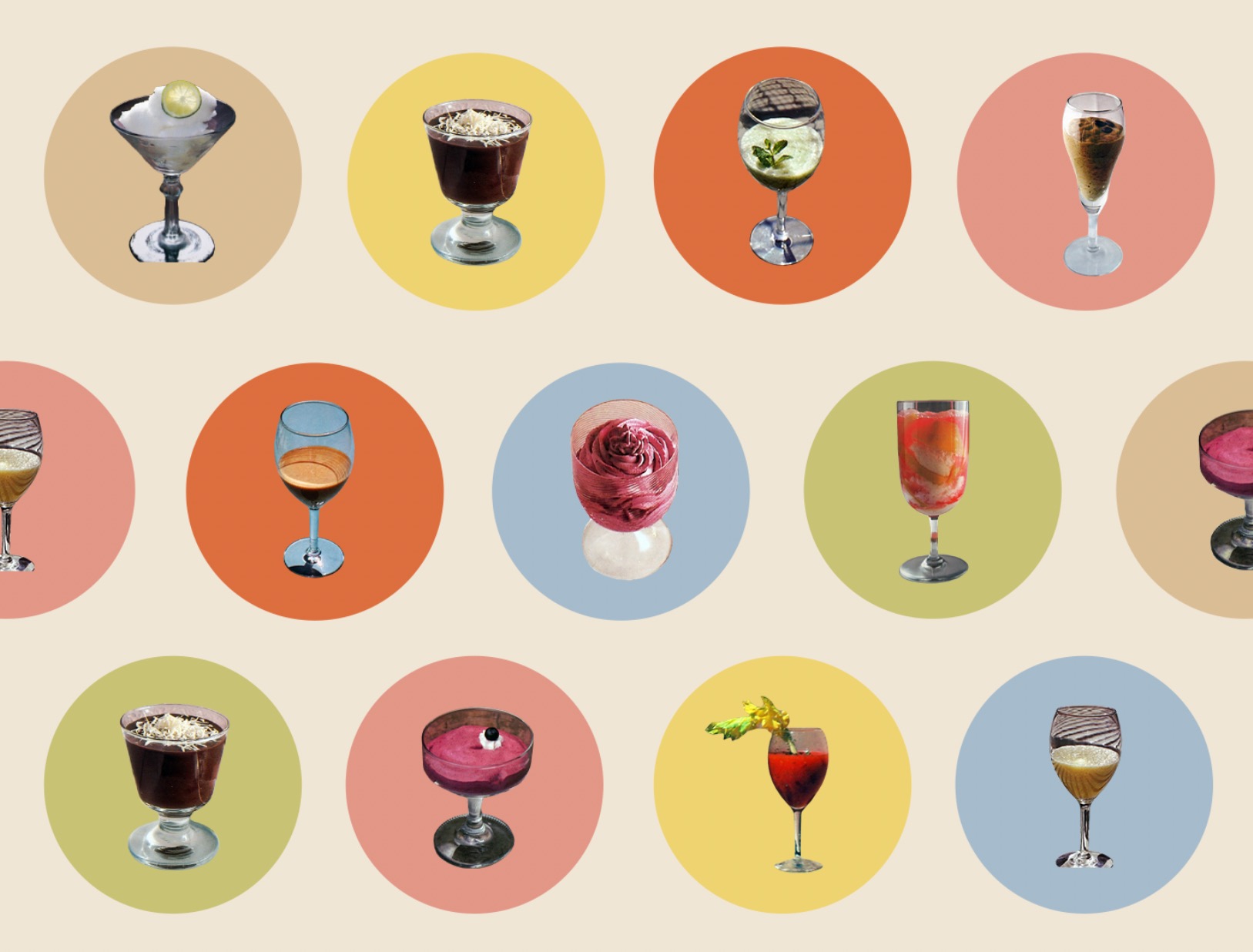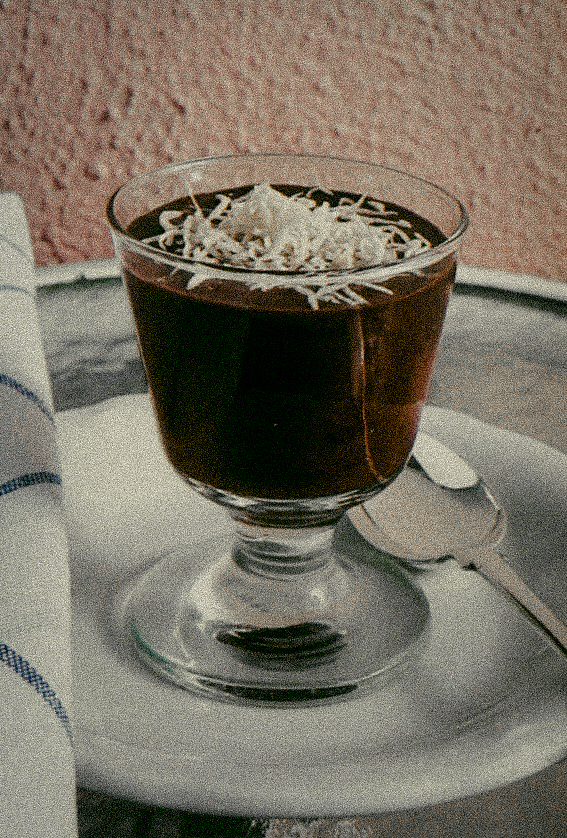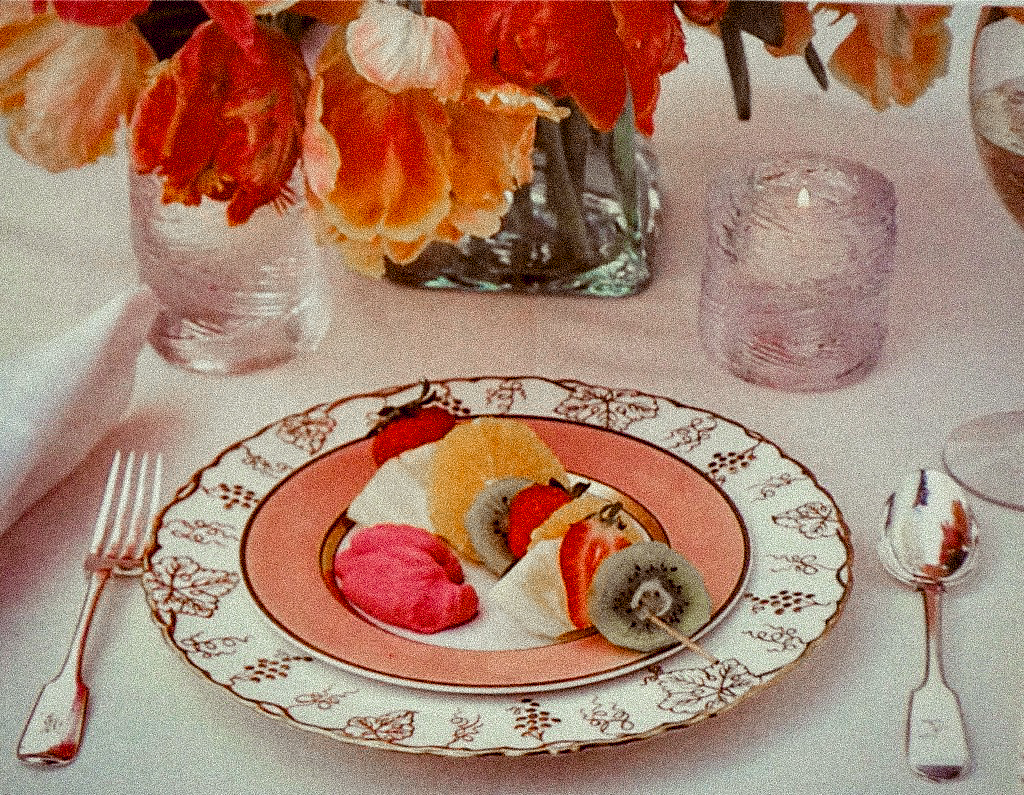Back to the Future

TWO CENTS | JAN 20, 2020
Back to the Future
Amassing vintage cookbooks is the cheapest way to time-travel. The “rules” of every decade are informal and mutable, but it is possible to perceive them if you have a big enough sample size of cookbooks.
You could not concoct a more appealing book for me in a lab. When I received my copy of Spa Food, written by a man named Edward J. Safdie, I knew it would harmonize beautifully with my stack of Reagan-era cookbooks. The cover was peak 80s: a scoop of orange-Zinfandel sorbet on a vaguely Memphis-y plate, flowers in a crystal vase (pronounced “voz”), a purple tablecloth, a title printed in loud geometric font. It promised menus and recipes from “the renowned Sonoma Mission Inn,” all of them shockingly low in calories but “lavish, elegant, stylish, and truly original.”
Notice that the word “delicious” does not factor into the above self-description. And yet the recipes—some of them—looked decent: Deep Green Vegetable Terrine (made with gobs of Parmesan and low-fat ricotta), San Francisco Deviled Crab, Herb Butter Fondue. I made the terrine, and it was scrumptious. I made the Spa Genoise cake, and it was not. It turns out that cake requires more than one tablespoon of butter to qualify as cake; the Spa Genoise would’ve made a nice biodegradable substitute for a kitchen sponge. For dessert purposes, I will remain loyal to The Silver Palate Good Times Cookbook, circa 1985, with its banana bourbon cakes and coffee brownies.
Anyway, the point of all this is time-travel. Amassing vintage cookbooks is the cheapest way to do it: I’ve made prune whip from 1951, bread from the 1600s, apple crisp from the 1970s—on each occasion adhering with total discipline to the recipe, so that I could relish the idea that I was eating exactly what a previous version of me would’ve eaten, with no alterations.
The “rules” of every decade are informal and mutable, but it is possible to perceive them if you have a big enough sample size of cookbooks. People in Medieval England loved smoked eel. Californians in 1978 were horny for raisins. Americans in the mid-1980s, if my book stack is any indication, adhered to a fascinating variety of tastes and preferences. In honor of Spa Food, I performed a deep dive into the decade of my birth and created a brief time-travel manual for you.
Bon appetit.

PHOTO BY EDWARD J. SAFDIE
The cardinal rules of 1980s dining:
Putting things on skewers is huge. (Fruit, meat, shrimp—anything.)
Mousse is huge.
Mousse should be served in a chilled goblet.
You should own goblets.
Bulgar wheat is huge.
Gazpacho is huge.
Swordfish is huge.
Crudités are huge.
White wine vinegar is huge.
Bran muffins are huge. (But not literally: muffins are still daintily portioned.)
Roasted red peppers are not yet huge, but soon will be.
Mineral water is extremely cool.
A mint garnish is extremely cool.
Every plate should have a lemon slice on it.
Everything tastes better with a side of lemon mayonnaise.
Or its close relative, aioli.
Everyone loves quiche.
One word: kiwi.
Another word: espresso.
Two more words: fresh pasta.
“Gluten-free” is not a thing.
Juice fasts are a thing, but a niche thing.
The only beans are pinto beans.
The only cheese is chevre.
The only pastry is French pastry.
The only cake is carrot cake.
“Cranberry-orange” is quickly rising to prominence.
Ditto low-fat ricotta cheese.
Ditto tapenade.
Ditto endive.
If you don’t know how to carve a rose from a radish, what are you even doing?

PHOTO BY EDWARD J. SAFDIE
Molly Young is the literary critic for New York magazine and a contributing writer at the New York Times Magazine. During the quarantine of 2020, Molly published a zine about the sick and twisted hobbies of rich people throughout history. You can find her baking (usually with some sort of foliage) on Instagram @mollybethyoung.
SIMILAR ARTICLES




